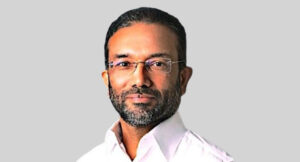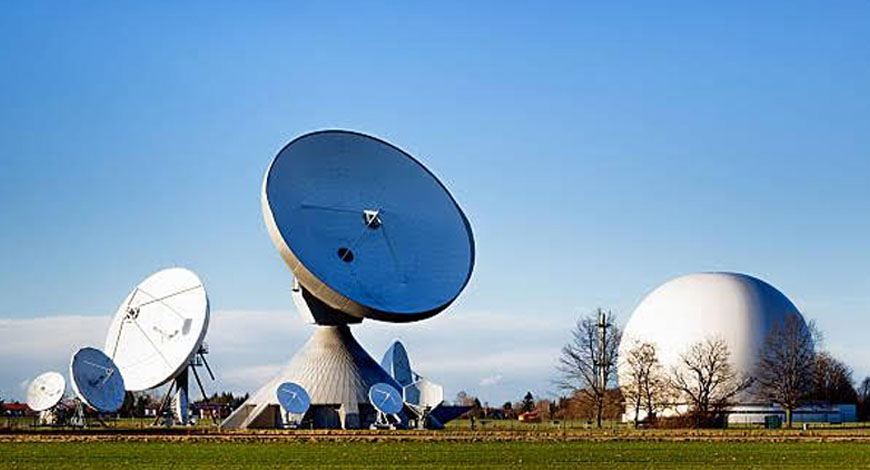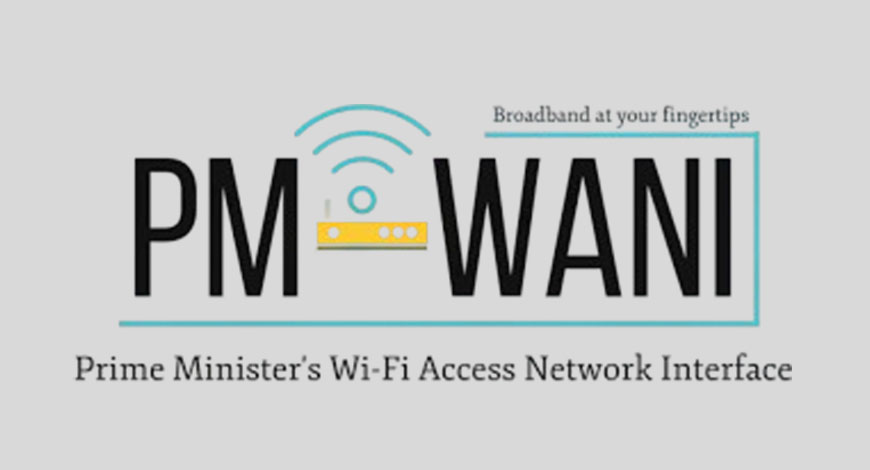Elon Musk’s SpaceX launches Starlink in Cape Verde country in Africa. Starlink offers satellite internet services across 100 countries. With Cape Verde added to the list, the company will continue providing low-latency and high-speed internet to the people. Elon Musk reacted to the expansion of Starlink and said, “Starlink now in Cape Verde.” In India, Starlink will likely be launched once the government approves company’s entry around January 2025. Nitin Gadkari Says Government Values Amazon’s Efforts To Leverage Its Logistics Expertise To Empower Urban, Rural Businesses in India. Latestly
Category: Broadcast
-

Hexagon Cup renews ITV broadcasting deal for 2025
The Hexagon Cup padel tournament has renewed its UK media rights partnership with commercial free-to-air broadcaster ITV for the second edition of the event.
The 2025 Hexagon Cup, which will take place from January 29 to February 2 in Madrid, will be streamed on the ITVX service live on February 1 and 2, covering all matches on those days. The ITV4 linear channel will also air post-event highlights.
The 2025 edition will feature returning teams AD/vantage, co-owned by Andy Murray and Anthony Joshua, ElevenEleven, led by Eva Longoria, and RL9, fronted by Robert Lewandowski.
New entries this year, meanwhile, include Krü Padel by Taktika, supported by Sergio Agüero and Lionel Messi, and 10 Padel, led by F1 driver Pierre Gasly.
Tim Godfrey, strategic advisor to the Hexagon Cup, has said: “ITV’s reach and reputation for top-tier sports coverage make them the ideal partner for bringing the Hexagon Cup to life for UK viewers.”
Richard Botchway, ITV assistant sport commissioner, added: “We’re excited to continue our partnership with the Hexagon Cup. It’s a unique addition to our sports offering and a great way for viewers to experience the energy and excitement of padel at the highest level.”
Last year, ITV first became an official rights holder of the Hexagon Cup, marking the first time that professional padel had been aired on a mainstream television channel in the UK.
The event is described as padel’s first World Cup for private teams. It features men’s and women’s players competing in teams for an equal prize fund of €1 million ($1.08 million).
Recently, GolStadium, the revived OTT streaming platform owned by Spanish sports agency Mediapro, acquired domestic TV rights to the tournament.
The platform will broadcast all matches from the tournament both live and delayed on-demand, with daily broadcasts occurring from 1 pm through 10 pm local time.
Meanwhile, the Hexagon Cup has today also further bolstered its commercial portfolio for the second season with Spanish fashion brand Scalpers unveiled as the official clothing sponsor for the tournament.
Scalpers will provide Hexagon Cup staff uniforms, including executive teams and event staff.
Additionally, Scalpers will host its own activation space in the fan zone at the Madrid Arena, with fan engagement activities planned throughout the competition week. Sportcal
-

Prime Video appoints Keisuke Oishi country manager for Japan
Oishi will take up the role today (January 20), moving from his position as director and general manager of Amazon Music Japan. The executive joined Amazon in 2014 after 17 years at Sony Corp, where he rose to senior manager of strategy in the PC business unit. He reports to Gaurav Gandhi, vice president of Prime Video Asia Pacific, Middle East and Africa.
Oishi replaces Takashi Kodama, a former Disney Japan executive, who stepped down from Amazon in November to become president and CEO of Amutus Corporation, the parent company of Japanese digital manga distributor Mecha Comic.
The appointment follows continued growth for Prime Video in Japan, which led all streaming services in the country with 19.7 million monthly active users, according to a report published last year by Media Partners Asia. A more recent report by MPA stated that Japan has the third fastest growth rate for streaming in Asia – behind India and China – with a projected 15% growth by 2029.
Alongside its main SVOD business, Prime Video Japan also offers add-on subscriptions, providing access to popular streaming services, and has one of the largest TVOD content libraries in the country. It has advanced in its live sports offering around major events in boxing, baseball, and other sports.
While Prime Video backed away from original productions in Southeast Asia last year, it continues to invest in Japan and India. Recent features include Takeshi Kitano’s Broken Rage, which became the first Japanese film produced for streaming to be officially selected for Venice, where it received its world premiere last year. It will stream on Prime Video from February 13.
In an internal email to the Prime Video Asia Pacific team today, Gandhi said: “We’ve seen great success with our content and incredible customer growth for Prime Video in Japan over the last few years thanks to all your great work, creativity, and relentless focus on the customer. I remain super excited about the future of our Prime Video Japan business, especially with our plans and initiatives for 2025.” Screen Daily
-

Saudi Prince Alwaleed’s KHC open to invest in TikTok
Saudi Arabian Prince Alwaleed Bin Talal’s investment company Kingdom Holding (KHC) would be interested in investing in ByteDance’s TikTok if Elon Musk or others offered to buy it, CEO Talal Ibrahim al-Maiman told Al Arabiya TV.
The search to find a buyer for the Chinese-owned popular short-video app continues in the US after it went dark and was revived later by an executive order signed by President Donald Trump delaying the enforcement of a ban on it by 75 days.
Trump said on Tuesday he was open to billionaire Musk buying the app if the Tesla CEO wanted to do so.
KHC already holds stakes in Musk’s social media platform X and his artificial intelligence startup xAI.
Saudi Arabia’s sovereign wealth fund PIF holds a minority stake in KHC, with 5% of the company floated on the Saudi stock exchange.
Al-Maiman expected low-cost Saudi airline flynas, in which KHC has substantial shares, to be in the final stage of getting approval from Saudi regulator CMA to be listed, he added on the sidelines of the World Economic Forum in Davos, Switzerland.
While KHC, founded by Saudi Arabia’s self-styled Warren Buffett, Prince Alwaleed, holds a large diverse portfolio that includes petrochemicals, healthcare, real estate and e-commerce, the company wasn’t rushing into the cryptocurrency market.
“We support Mr. Buffet’s theory what you don’t buy with, don’t invest in, so as we cannot buy any goods with cryptocurrencies therefore we are currently not looking in investing in them,” al-Maiman said. Reuters
-

Ex Disney+ Hotstar head Sajith Sivanandan joins Jio Mobile
Former chief executive officer at Disney+ Hotstar, Sajith Sivanandan, has been appointed as President of Jio Mobile Digital Services. Sivanandan, who will be leading the AI-powered digital services for Jio Mobile, confirmed the news on LinkedIn.
Before joining Disney+ Hotstar in 2022, Sivandandan spent over 14 years at Google and served as managing director and business head of Google Pay and Next Billion User Initiatives in the APAC region.
Post Disney’s Star India merger with Reliance Industries’ Viacom 18, Sivanandan stepped down from his role in October.
Sivanandan oversaw North India division for Channel V after starting his career at Star TV in 1996. He then worked at The Gallup Organisation and Affle UK, where he gained experience in analytics and strategy in digital media. The Hindu
-

Starlink vs. Kuiper: The satellite broadband race for space and subscribers
Strand Consult published an article on its website that makes numerous predictions for broadband and related industries in 2025 and compares them to the company’s 2024 predictions. It’s fascinating and well worth reading. There is one prediction in particular that got me thinking.
In its 2024 predictions, Strand Consult compared Elon Musk’s Starlink to Jeff Bezos’s Kuiper. It said that Bezos had opened a burger bar, while Musk runs an interstellar McDonald’s. The 2025 observation agrees with that assessment.
My first reaction was a chuckle because it’s an amusing analogy. But then I started to think about the companies to see how accurate it is.
Starlink has a huge head start on Kuiper, with 6,000 satellites already in orbit. It’s a no-brainer to say that Starlink is far superior to the two companies that sit today. In fact, if Starlink is an interstellar McDonald’s, Kuiper is not even a menu at a burger bar yet.
But Strand is not talking about the current companies, but their long-term potential, and that gets more interesting. Kuiper has a huge hurdle ahead to launch enough satellites to have a viable service. All indications are that the company is on the verge of doing so, but until those birds are in the sky, Kuiper is not much more than a blueprint of a company.
But what about after Kuiper has enough satellites to offer decent residential broadband? Starlink will still be ahead as it keeps launching new satellites. Starlink plans will always have a lot more satellites than Kuiper. But Starlink is now beginning the cycle where a lot of its launches will be replacing satellites that have hit the short end of functional life.
The interesting thing about Starlink is that it seems ready to chase a wide range of new opportunities. It offers home broadband, but it’s expanded to also service mobile folks in campers and hikers. Starlink recently hinted that it’s going to chase other revenue opportunities, like encryption services for governments and communications infrastructure for militaries. This will greatly increase earnings per satellite but will divert a lot of broadband capacity to those big bandwidth users.
I think Strand’s observation is based on the belief that Kuiper is likely to concentrate on just selling broadband to people. It’s a boring product compared to many business lines that Starlink will be chasing. And that’s where I think the burger bar analogy gets interesting.
Jeff Bezos is a master of bundling. He makes money by getting people to buy multiple services, and it’s hard to think he won’t do this with satellite broadband. He might bundle this creatively with Amazon Prime! and other products, where the add-ons bring more profit than his satellite broadband alone.
I think the best way to think about Kuiper’s future is to compare it to the FWA cellular broadband being sold by Verizon and T-Mobile. The big ISPs all rail against FWA and say that it’s not adequate broadband. But the public is saying otherwise, and the two companies have taken the market by storm by adding over 10 million new customers while the rest of the ISPs in the country flounder.
My bet is that Kuiper broadband is going to be priced far below Starlink, and just like with FWA cellular broadband, a whole lot of ISP customers, including those who use Starlink today, are going to be lured by the price.
The Strand prediction feels right to me. Starlink will be doing big, exciting things around the world for governments and huge corporations. It will be selling connections with a wow factor. Meanwhile, Bezos might be selling nothing more than plain household broadband bundled with other everyday products—but selling a lot of it.
This makes me wonder if ten years from now, the pedestrian Kuiper might have more customers while Starlink might make more money. It’s a big possibility unless Bezos is lured into competing head-to-head with Starlink on the big stuff. I think both companies will claim they are being highly successful, and it will likely be true—with each following a different business model. That might be the inherent advantage of satellite broadband—unlike a normal ISP network that can only pursue opportunities in the immediate geographic vicinity—a satellite company can choose from a wide range of business plans. CircleID
-

Three private firms, apart from ISRO, shortlisted to manufacture 31 satellites
Three private companies with their offices in as many South Indian states have been shortlisted to collectively produce 31 satellites as part of the space-based surveillance (SBS) programme for India’s strategic needs to be used by national security agencies.
This is the first time that private industry will be developing satellites for strategic needs and while contracts for the same are expected to be signed anytime.
The third phase of SBS programme — its earlier avatars have seen satellites from Cartosat and Risat families — will further enhance India’s space surveillance capabilities and see a total of 52 satellites in both geostationary orbit (GEO) and low Earth orbit (LEO).
Twenty-one of these satellites will be developed by Isro and the other 31 will come from the private sector. Together, the project is to cost an estimated Rs 26,000 crore — this is expected to be revised.
Multiple sources confirmed to TOI the govt has shortlisted three firms — their names are being withheld at this juncture given the sensitive nature of the programme — with one of them producing 15 and the other two producing eight satellites each.
The firms will be expected to deliver by the fourth year from the year of signing the contract as per initial plans. “The agency involved in shortlisting the three firms has made progress in the process. But given that the highest offices of the country’s security and defence establishments are directly involved in the project, they are not expected to divulge too many details at this juncture,” one of the sources said.
The latest iteration marks a substantial upgrade from its predecessors, incorporating artificial intelligence to enable unprecedented satellite interaction and intelligence gathering.
A key innovation of SBS-3 will be its integrated network of satellites positioned in both LEO and GEO. This dual-layer system will allow for dynamic cooperation between satellites, with GEO satellites at 36,000km able to detect activities and direct LEO satellites at 400-600km to provide detailed observations.
The programme is expected to allocate dedicated satellites to support land, sea, and air-based missions across India’s military services, enhancing the nation’s defence capabilities. Once implemented, this will place India among major spacefaring nations like the US, Russia, and China in advanced space surveillance capabilities. Although the gap will still be large.
The programme is being designed to contribute to various critical functions beyond military applications, including environmental monitoring, disaster response, and scientific research —something Earth observation satellites can offer. ToI
-

TRAI proposes new regulatory framework for ground-based broadcasters
The ‘Guidelines for Uplinking and Downlinking of Satellite Television Channels in India, 2022’ issued by the Ministry of Information and Broadcasting (MIB), containing the terms and conditions for TV broadcasting services, make it mandatory for the broadcasters to use satellite medium for providing their channels to the Distribution Platform Operators (DPOs).
The advancement of technology has made it feasible for broadcasters to provide their television channels to DPOs terrestrially also, i.e., using terrestrial communication technologies like wireline (e.g., cable/fiber, etc.) or wireless (e.g., cellular/microwave/Wi-Fi, etc.),/internet/cloud. The terrestrially transmitted channels can simultaneously be carried to multiple DPO networks for re-transmission.
Considering these developments, it is essential to establish an enabling framework to ensure that service providers can fully leverage technological advancements.
MIB, vide its letter dated May 22, 2024, has sought recommendations of TRAI on “Regulatory Framework for Ground Based Broadcasters” under Section 11(1)(a) of TRAI Act, 1997.
Accordingly, TRAI issued a Consultation Paper titled ‘Regulatory Framework for Ground-based Broadcasters’ on 18th October 2024. The comments and counter comments received in the consultation process are available on TRAI’s website. As part of the consultation process, Open House Discussion (OHD) was held on 20th December 2024.
Based on the comments, counter-comments received, inputs gathered during OHD, and its own analysis, TRAI has finalized the Recommendations on ‘Regulatory framework for Ground-based Broadcasters’.
Salient points of the recommendations are given below:
- The framework for Ground-based Broadcasters shall be similar to the framework contained in the ‘Guidelines for Uplinking and Downlinking of Satellite Television Channels in India, 2022’ for traditional satellite-based broadcasters, to the extent applicable to the ground-based broadcast model, duly excluding the provisions related to the satellite communication medium.
- The scope of Ground-based Broadcasters shall be to provide television channel(s) to Distribution Platform Operators (DPOs) using terrestrial communication medium for onward re-transmission.
- A ground-based broadcaster may use any terrestrial communication medium(s) to deliver channels to the DPOs. There shall be no restriction on the use of terrestrial communication technologies/systems, and the entity may use more than one such system as per its business decision.
- For the permitted channel, a Ground-based Broadcaster (GBB) can switch to or additionally use satellite medium for broadcasting with due permission of the Central government. Similarly, a Satellite-based Broadcaster(SBB) can switch to or additionally use terrestrial communication medium for broadcasting with due permission of the Central government.
- The service area for a Ground-based Broadcaster shall be at the National level.
- MIB may examine whether Free Ad-Supported Streaming Television (FAST) channels comply with the extant guidelines/policy framework. MIB may issue policy guidelines for such channels in consultation with TRAI if necessary.
- The Authority reiterated its recommendations on ‘Ease of Doing Business in Telecom and Broadcasting Sector’ dated May 2, 2023 to the extent applicable to Ground-based Broadcasters.
BCS Bureau
-

TRAI releases draft order on rationalizing broadband tariffs for PDOs under PM-WANI
The Telecom Regulatory Authority of India (TRAI) has proposed rationalizing broadband tariffs for Public Data Offices (PDOs) under the PM-WANI scheme to overcome barriers to public Wi-Fi hotspot growth and ensure affordable nationwide connectivity.
The regulator highlighted that the proliferation of the PM-WANI scheme was significantly below the envisaged targets. One reason for this low proliferation was the high cost of backhaul internet connectivity charged by Telecom Service Providers (TSPs) and Internet Service Providers (ISPs). It was also stated that TSPs and ISPs often required Public Data Offices (PDOs) to connect public Wi-Fi access points using expensive internet leased lines under the guise of commercial agreements.
In its revised draft Telecommunication Tariff (71st Amendment) Order, 2025, TRAI prescribed that the broadband tariff (FTTH) for PDOs under the PM-WANI scheme should not exceed twice the tariff applicable for retail broadband (FTTH) services of corresponding capacity offered by service providers.
This proposal aims to support the effective proliferation of PM-WANI hotspots and foster a sustainable ecosystem that ensures a balanced relationship between PDOs and service providers. This initiative aims to contribute to the broader objectives of the National Digital Communications Policy, 2018, and Bharat 6G Vision, which targets the deployment of 50 million public Wi-Fi hotspots by 2030.
The draft amendment has been placed on TRAI’s website (www.trai.gov.in). Stakeholders are requested to provide their written comments by January 31, 2025, and counter-comments by February 7, 2025.
TheNewsBit Bureau -

Broadcast equipment market size experiences a steady growth
The broadcast equipment market refers to the tools and technologies used to transmit audio, video, and data to a wide audience. This market’s growth is driven by advancements in broadcasting technologies, the transition from analog to digital broadcasting, and increasing demand for over-the-top (OTT) services. Additionally, the rise of high-definition (HD) and ultra-high-definition (UHD) content is pushing the adoption of advanced broadcasting solutions.
Broadcast Equipment market is projected to reach a valuation of US$ 9.3 billion by the conclusion of the forecast period in 2034. Furthermore, the report anticipates that the market will grow at a compound annual growth rate (CAGR) of 5.1% between 2024 and 2034.
Key players in the broadcast equipment market include:
- AVL Technologies Inc.
- Belden Inc.
- Cisco Systems, Inc.
- Clyde Broadcast Technology Limited
- CommScope
- Eletec Sarl Radio Broadcasting Equipment
- ETL Systems Ltd
- Evertz
- EVS Broadcast Equipment
- Grass Valley Canada
- Harmonic Inc.
- NEC Corporation
openPR
